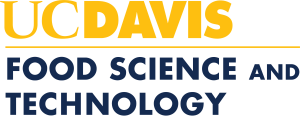COURSE GOALS: It is necessary for the food industry to measure the flavor, texture and other sensory characteristics of food and consumer products for quality assurance, product development and optimization, studies of alternative processing, packaging and storage, as well s relating sensory to physical properties One of the best instruments for such analytical measurements is the human sensory system. It is also important to measure consumer perception and acceptance of such products. These activities fall under the general heading of Food Sensory Science. The goal of this course is to introduce the techniques and theory of food sensory measurement to students who do not intend to specialize in this area, so that they are able to understand and interact constructively with those who have specialized
ENTRY LEVEL: Prerequisite: FST 117
COURSE FORMAT: Two one-hour lectures and one three-hour laboratory per week. Grades based on lab reports (35%), two midterms (each 15%), one paper (15%) and a final exam (20%).
TOPICAL OUTLINE:
- Sensory attributes of foods and beverages and their perceptions
- appearance
- flavor
- taste
- aroma
- texture/mouthfeel
- trigeminal sensations
- Sensory evaluation methodology
- threshold measurements
- difference tests
- scaling procedures
- descriptive analytical methods
- consumer tests
- Instrumental measurements
- color
- texture
- flavor
- Correlation of sensory and instrumental measures
- Applications of sensory tests for
- quality assurance
- product development
- product optimization
- marketing
